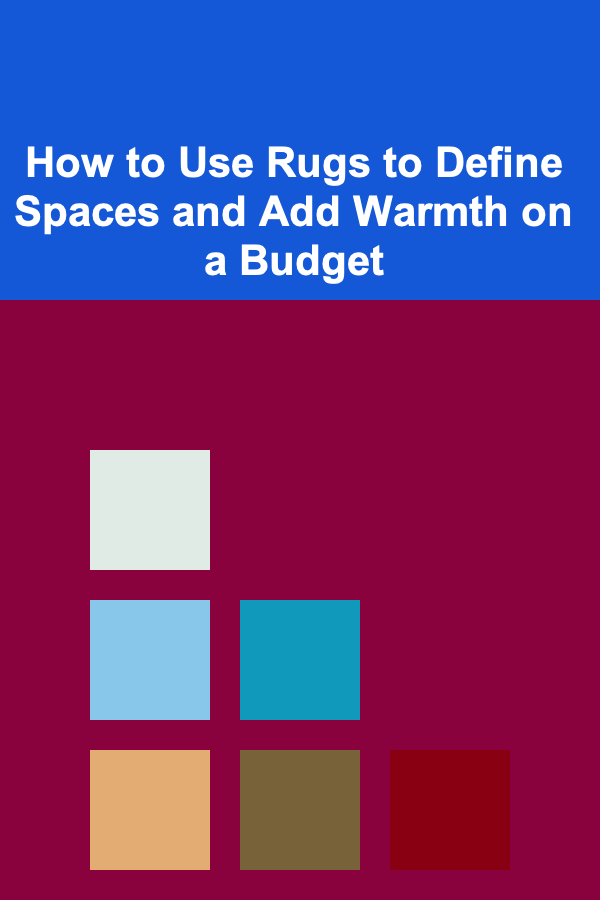
How to Design a Blog Planner That Actually Works for You
ebook include PDF & Audio bundle (Micro Guide)
$12.99$8.99
Limited Time Offer! Order within the next:
Not available at this time

Blogging can be a rewarding and fulfilling creative outlet, but it also requires organization, consistency, and clear goals to ensure success. Whether you're a professional blogger or a hobbyist, designing a blog planner that fits your needs is crucial to maintaining productivity and focus. A well-organized planner can help you stay on track, avoid burnout, and streamline your blogging process, making it easier to produce high-quality content regularly.
In this article, we'll discuss the key components of a successful blog planner and provide practical tips on how to design one that will help you achieve your blogging goals, stay organized, and create content consistently.
Define Your Blogging Goals
Before you even start designing your blog planner, it's essential to define your goals. What do you hope to achieve with your blog? Are you aiming to grow your audience, monetize your blog, or simply create content for personal enjoyment? Your goals will help guide your planning process and determine the type of tasks you need to focus on.
Here are some common blogging goals:
- Increase traffic: Do you want to grow your blog's readership and attract more visitors?
- Monetize your blog: Are you planning to generate income through affiliate marketing, sponsored posts, or selling products/services?
- Establish authority: Do you want to become an expert in your niche and build credibility in your industry?
- Consistency: Are you focused on publishing new content regularly, even if you don't have a clear monetization strategy yet?
Once you have a clear vision of your goals, you can create a planner that helps you stay focused on activities that will move you closer to your objectives.
Practical Tip: Write your goals down somewhere visible in your planner so that you can refer back to them regularly. This will help keep you aligned with your mission.
Choose the Right Format for Your Blog Planner
There are many ways to create a blog planner, so choosing the right format depends on your preferences and workflow. You can opt for a digital planner, a physical notebook, or a hybrid approach. Each format has its pros and cons, so let's break them down:
- Digital Blog Planner: Using digital tools such as Google Sheets, Notion, Trello, or Todoist allows you to access your planner from anywhere, collaborate with team members, and set reminders. A digital planner also makes it easier to track progress and visualize your workflow.
- Physical Blog Planner: A printed planner or a bullet journal can be a satisfying way to map out your ideas on paper. If you prefer the tactile experience of writing things down, a physical planner can help you stay organized while offering a creative outlet.
- Hybrid Planner: Some people prefer using a combination of digital and physical planners. For example, you might track deadlines and content ideas digitally but sketch out brainstorming ideas or long-term goals on paper.
Practical Tip: Choose a planner format that suits your lifestyle. If you travel a lot or work remotely, a digital planner may be the best choice, whereas if you love writing things down, a physical planner might be more effective.
Organize Your Planner into Key Sections
A successful blog planner should be divided into several key sections, each serving a specific purpose. Here are some sections to include in your planner to help you stay organized:
a. Editorial Calendar
An editorial calendar is one of the most important elements of your blog planner. It helps you schedule and plan content ahead of time, ensuring that you consistently publish new posts. Your editorial calendar should include:
- Post titles: Brainstorm and list potential blog post ideas.
- Publish dates: Assign specific dates to each post to ensure that you stay on track with your content schedule.
- Post types: Identify whether your post will be a how-to guide, product review, personal story, case study, etc.
- Status: Track the progress of each post (e.g., in progress, editing, scheduled, published).
b. Content Ideas Bank
A content ideas bank is a repository where you can collect potential blog post topics. This section is particularly useful for when you're feeling uninspired or need new ideas. You can organize this section by categories or tags related to your blog's niche. For example, if your blog is about health and wellness, your content ideas bank could include categories like nutrition, exercise, mental health, and lifestyle.
c. Blog Post Checklist
A blog post checklist helps you keep track of the necessary steps involved in creating a post. Having a checklist for each post ensures that nothing is missed and that your content is optimized for both readers and search engines. Key items to include on your blog post checklist:
- Research and outline the topic
- Write the first draft
- Edit for clarity, grammar, and style
- Optimize the content for SEO (keywords, meta descriptions, etc.)
- Add images or multimedia
- Proofread and finalize
- Schedule or publish
d. SEO Tracking
SEO is an integral part of blogging, as it helps you attract organic traffic from search engines. In this section of your planner, track important SEO data for each blog post. You can include:
- Target keywords: What keywords you're optimizing for in each post.
- SEO audit: Track whether you've optimized your blog for SEO, including title tags, meta descriptions, and header tags.
- Google Analytics: Keep track of metrics such as traffic, bounce rate, and conversion rates for each post.
e. Promotion Plan
A promotion plan is essential for ensuring your content reaches a broader audience. Here, you can plan how you'll promote each post across various platforms, such as social media, email newsletters, and collaborations with other bloggers. Key elements to include in your promotion plan:
- Social media posts: Write out the social media copy and decide when and where to post.
- Collaborations: Plan any partnerships with other bloggers or influencers to amplify your content.
- Email marketing: Create a strategy for promoting your blog posts to your email list.
f. Metrics and Analytics
Tracking metrics is essential for understanding whether your content is performing well. This section of your planner can help you stay on top of:
- Page views and traffic
- Engagement rates (comments, shares, likes)
- Affiliate sales or sponsored post earnings
- Conversion rates (newsletter signups, product purchases)
You can set up monthly or quarterly goals to track progress and adjust your strategy accordingly.
Set Realistic Deadlines
Deadlines are a key part of staying productive and organized. Setting deadlines for each stage of the blogging process helps you stay focused and manage your time more effectively. However, it's important to be realistic about how much time each task will take.
Here are some tips for setting deadlines:
- Estimate the time for each task: Be honest with yourself about how much time each step of creating a blog post will take (research, writing, editing, SEO, etc.).
- Avoid overloading yourself: Don't plan too many tasks in a single day or week. Leave room for flexibility and creativity.
- Set buffer time: Always allow extra time for unforeseen circumstances, such as writer's block or technical difficulties.
Practical Tip: Use a time-blocking method to allocate specific blocks of time for blogging tasks and stick to your schedule as much as possible.
Incorporate Regular Reviews and Adjustments
Your blog planner should be a dynamic tool that evolves with your needs. Regular reviews help you assess your progress, identify areas for improvement, and adjust your strategy as necessary. Set a recurring time (weekly, monthly, or quarterly) to review your blog performance, revisit your goals, and refine your approach.
During these reviews, consider:
- Content performance: Are certain topics resonating more with your audience? If so, create more content around those topics.
- Goals: Are your blogging goals still aligned with your current direction? If not, adjust them.
- Time management: Are you staying on track with your deadlines, or do you need to adjust your workload?
Regular reviews ensure that you stay on track and make data-driven decisions about your blog's future.
Stay Flexible
While a blog planner is a great tool for staying organized and on task, it's essential to stay flexible and open to change. Life happens, and sometimes your plans will need to be adjusted. Whether you need to push back a post, tweak your editorial calendar, or explore new opportunities, flexibility allows you to adapt and maintain momentum.
Practical Tip: Don't be afraid to adjust your planner if something isn't working. Your blog should evolve with your goals and your audience's needs.
Conclusion
Designing a blog planner that works for you requires understanding your goals, selecting the right tools, and creating an organized, flexible plan that suits your workflow. By incorporating elements like an editorial calendar, content ideas bank, SEO tracking, and a promotion plan, you'll be better equipped to create consistent, high-quality content that aligns with your blogging vision.
Remember, the most effective blog planners are the ones that are tailored to your unique needs and goals. Whether you choose a digital or physical planner, make sure it's a tool that helps you stay organized, focused, and inspired.
The key to success in blogging is consistency, and with a well-designed blog planner, you'll be on the right path to achieving your blogging goals and growing your online presence.

How to Care for Your Home's Copper Pipes to Prevent Corrosion
Read More
How to Clean Your Home While Reducing Chemical Exposure
Read More
How to Layer Lighting for an Inviting Living Room Atmosphere
Read More
How to Organize Your Home Office to Maximize Small Spaces
Read More
How to Use Rugs to Define Spaces and Add Warmth on a Budget
Read More
Why You Should Use Transparent Containers for Easy Access
Read MoreOther Products

How to Care for Your Home's Copper Pipes to Prevent Corrosion
Read More
How to Clean Your Home While Reducing Chemical Exposure
Read More
How to Layer Lighting for an Inviting Living Room Atmosphere
Read More
How to Organize Your Home Office to Maximize Small Spaces
Read More
How to Use Rugs to Define Spaces and Add Warmth on a Budget
Read More